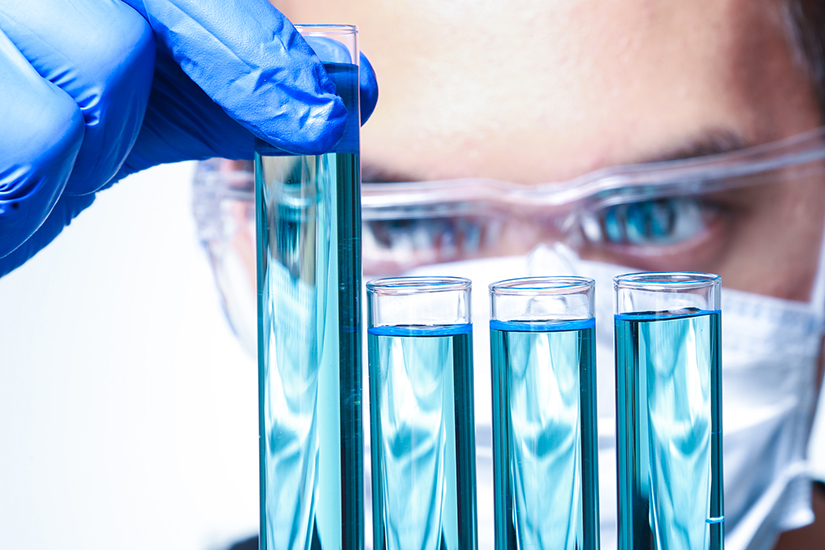Augmenting and Preserving, Not Overdriving the Skin’s Stem Cells
by Greg Maguire, Ph.D.
A milieu of molecules is responsible for maintaining the health of our various tissues, including our skin. Living in a world where rapid change of the environment is occurring so fast that evolution cannot effectively meet the challenges to that rapid change, means that the external environment, our exposome, contains many molecules that, when combined with our own internal molecules, such as our own molecules that are produced indirectly from environmental exposure, including inflammatory molecules, will contribute 70 to 90% of disease risks (Rapapport and Smith, 2010).
Homeostasis is a fundamental property of biological systems that has evolved to maintain the normal array of molecules within us. It preserves the stability of the skin’s molecular mix by maintaining key regulated variables within an acceptable range of values (Buchman, 2002). Homeostasis operates at the level of the entire organism, within tissue compartments, and within individual cells, where, in each instance, a normal level of protein content is maintained. This is critical, because the dry-weight of a cell is composed of about 50% protein. Homeostasis is best characterized at the level of the whole organism (systemic homeostasis). Here, regulated variables are well defined and include blood levels of glucose, Na+, Ca2+, and O2, blood pH and osmolarity, and core body temperature. These variables are maintained within a physiological dynamic range by the endocrine and autonomic nervous systems within the short term, but longer term homeostasis will also depend on the molecules released from stem cells, as well as the differentiation of stem cells into mature somatic cell phenotypes.
Considering homeostasis of proteins alone, called proteostasis, many of the skin’s proteins utilized for maintenance and healing of its cells and matrix are produced and released by a variety of adult stem cell types. Because of aging, disease, trauma, stress, and a number of other factors, stem cells become incapable of maintaining proteostasis in the skin. If we simply try to stimulate the stem cells to produce and secrete more of the proteins that are being lost during aging and other conditions, we “overdrive” the stem cells and cause them to age even more. Any potential short term gain will be negated and followed by accelerated aging of the stem cells, and an eventual further diminishment of the skin’s health and appearance. How then to treat the loss of the skin’s proteostasis as we age and experience other insults?
The use of S²RM® technology is one important means of restoring the proteostasis of the skin. Because S²RM® contains the myriad proteins that multiple stem cell types in the skin release to maintain and heal our skin, homeostatic renormalization is achieved through simple topical application of S²RM® molecules. What does this mean? All of the proteins that were normally present in your skin when it was young and healthy are returned to your aged and damaged skin. The return of proteostasis in the skin means that the function of our adult stem cells in the skin has been mimicked by S²RM®, thus returning the skin to a more healthy state. And equally important, we didn’t overdrive the skin’s own stem cells by forcing them to release more molecules – quite the opposite in fact – what we’ve accomplished with S²RM® is a reconditioning of the matrix that supports the skin’s own stem cells so that our own stem cells function more efficiently. And because we have supplied the stem cell’s molecules to the skin, our own stem cells didn’t have to work so hard. Homeostatic renormalization, especially proteostatic renormalization, is achieved resulting in healthier skin.
References
Buchman, TG (2002) The community of the self. Nature, 420: 246–251
Rappaport SM, Smith M T. (2010) Environment and Disease Risks. Science 330: 460-461
Do you want to learn more? Follow NeoGenesis on Facebook, Instagram, TikTok, LinkedIn and YouTube.
 San Diego, CA 92121
San Diego, CA 92121
858) 751-4714
www.NeoGenesis.com
info@neogenesis.com
by Greg Maguire, Ph.D.
A milieu of molecules is responsible for maintaining the health of our various tissues, including our skin. Living in a world where rapid change of the environment is occurring so fast that evolution cannot effectively meet the challenges to that rapid change, means that the external environment, our exposome, contains many molecules that, when combined with our own internal molecules, such as our own molecules that are produced indirectly from environmental exposure, including inflammatory molecules, will contribute 70 to 90% of disease risks (Rapapport and Smith, 2010).
Homeostasis is a fundamental property of biological systems that has evolved to maintain the normal array of molecules within us. It preserves the stability of the skin’s molecular mix by maintaining key regulated variables within an acceptable range of values (Buchman, 2002). Homeostasis operates at the level of the entire organism, within tissue compartments, and within individual cells, where, in each instance, a normal level of protein content is maintained. This is critical, because the dry-weight of a cell is composed of about 50% protein. Homeostasis is best characterized at the level of the whole organism (systemic homeostasis). Here, regulated variables are well defined and include blood levels of glucose, Na+, Ca2+, and O2, blood pH and osmolarity, and core body temperature. These variables are maintained within a physiological dynamic range by the endocrine and autonomic nervous systems within the short term, but longer term homeostasis will also depend on the molecules released from stem cells, as well as the differentiation of stem cells into mature somatic cell phenotypes.
Considering homeostasis of proteins alone, called proteostasis, many of the skin’s proteins utilized for maintenance and healing of its cells and matrix are produced and released by a variety of adult stem cell types. Because of aging, disease, trauma, stress, and a number of other factors, stem cells become incapable of maintaining proteostasis in the skin. If we simply try to stimulate the stem cells to produce and secrete more of the proteins that are being lost during aging and other conditions, we “overdrive” the stem cells and cause them to age even more. Any potential short term gain will be negated and followed by accelerated aging of the stem cells, and an eventual further diminishment of the skin’s health and appearance. How then to treat the loss of the skin’s proteostasis as we age and experience other insults?
The use of S²RM® technology is one important means of restoring the proteostasis of the skin. Because S²RM® contains the myriad proteins that multiple stem cell types in the skin release to maintain and heal our skin, homeostatic renormalization is achieved through simple topical application of S²RM® molecules. What does this mean? All of the proteins that were normally present in your skin when it was young and healthy are returned to your aged and damaged skin. The return of proteostasis in the skin means that the function of our adult stem cells in the skin has been mimicked by S²RM®, thus returning the skin to a more healthy state. And equally important, we didn’t overdrive the skin’s own stem cells by forcing them to release more molecules – quite the opposite in fact – what we’ve accomplished with S²RM® is a reconditioning of the matrix that supports the skin’s own stem cells so that our own stem cells function more efficiently. And because we have supplied the stem cell’s molecules to the skin, our own stem cells didn’t have to work so hard. Homeostatic renormalization, especially proteostatic renormalization, is achieved resulting in healthier skin.
References
Buchman, TG (2002) The community of the self. Nature, 420: 246–251
Rappaport SM, Smith M T. (2010) Environment and Disease Risks. Science 330: 460-461
Do you want to learn more? Follow NeoGenesis on Facebook, Instagram, TikTok, LinkedIn and YouTube.






